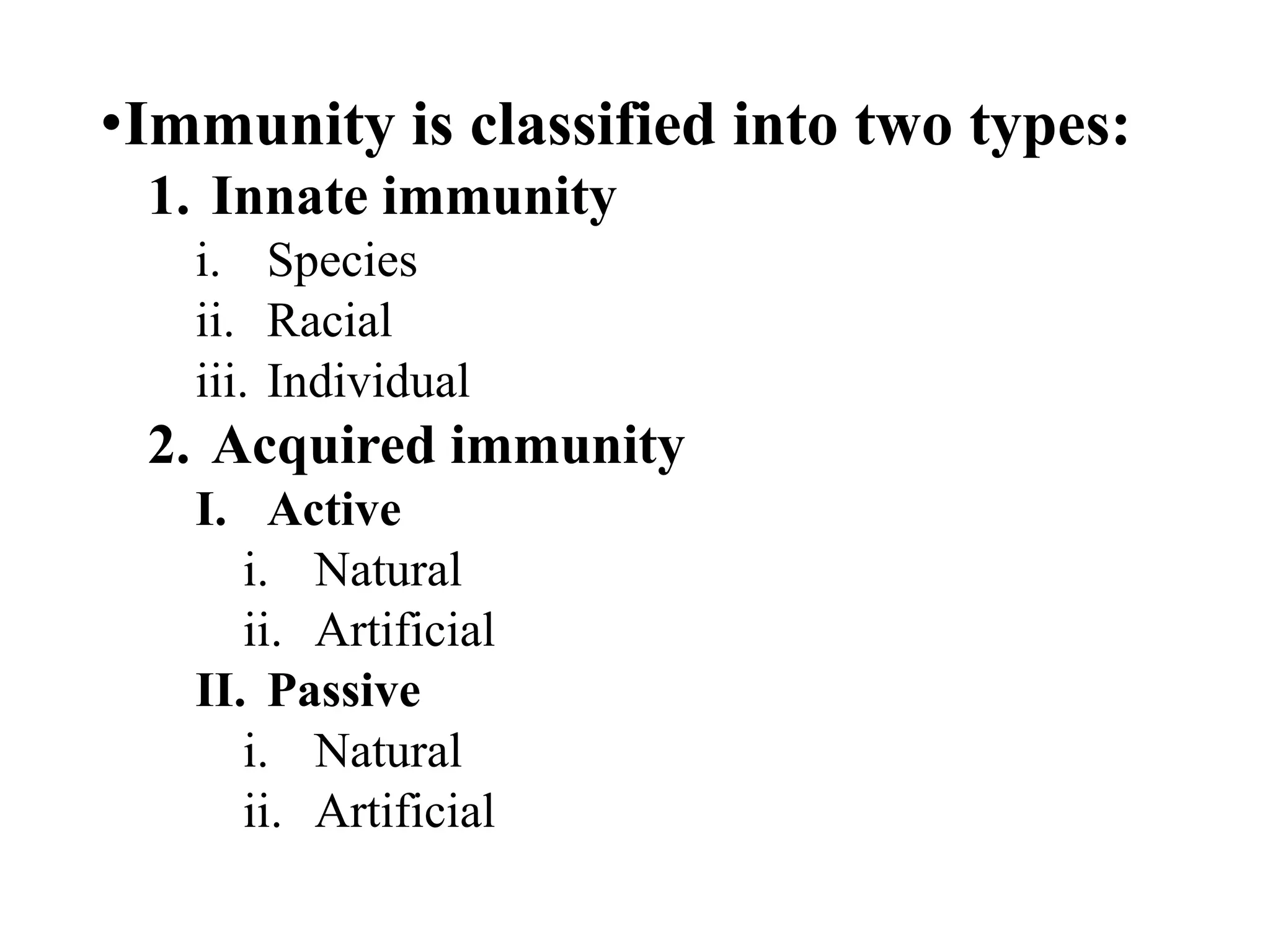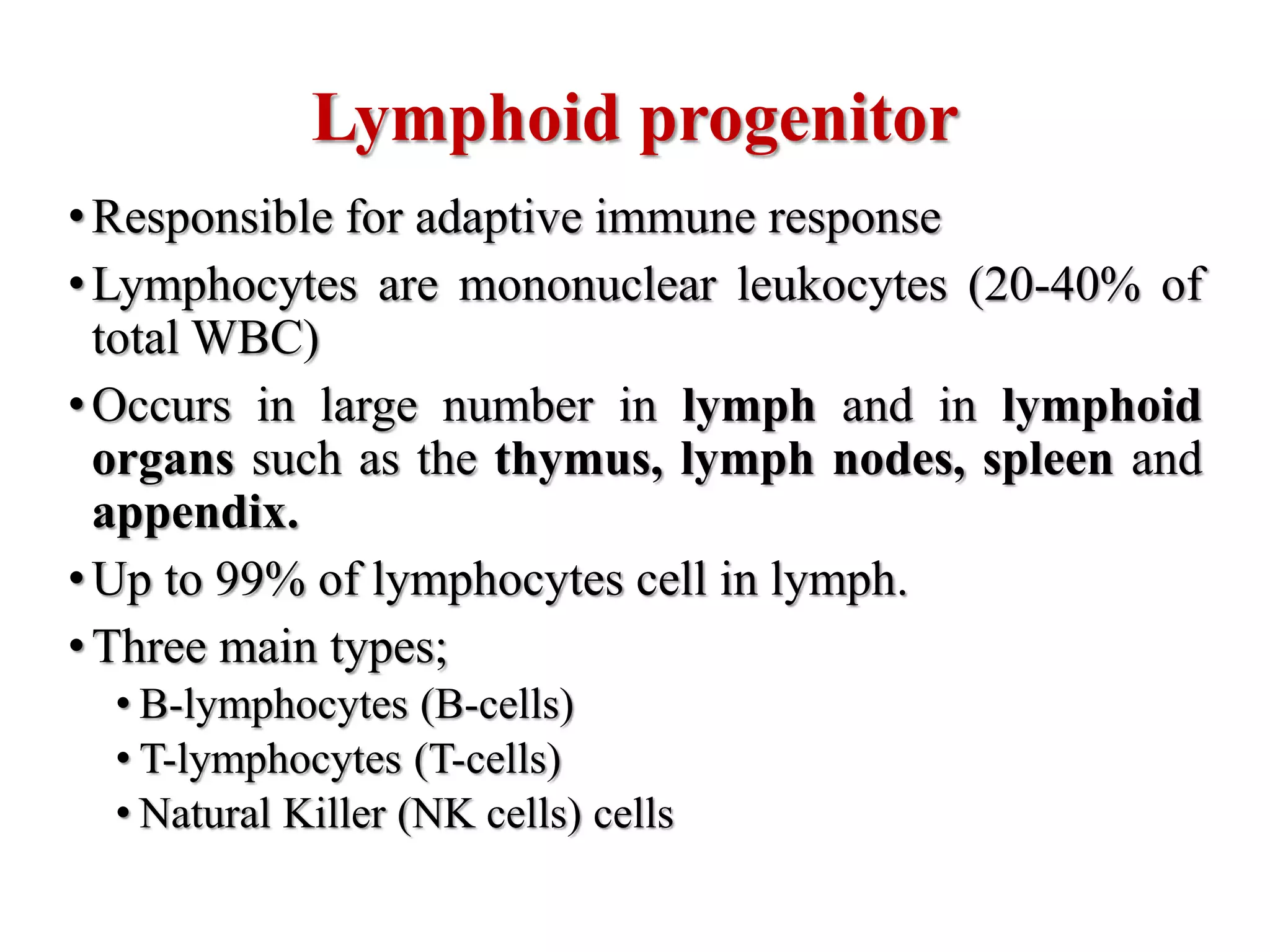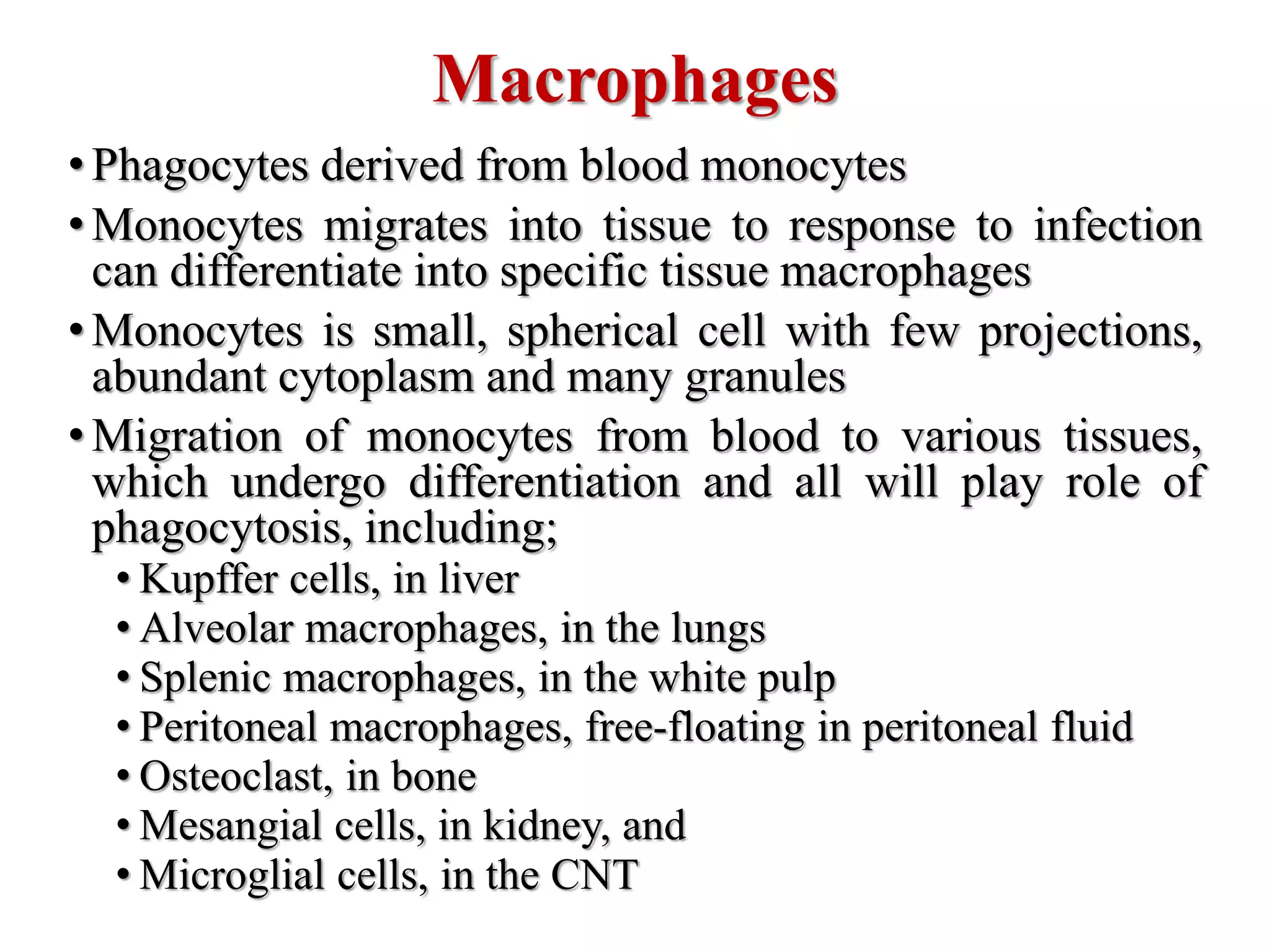This document provides an overview of the immune system, including both innate and adaptive immunity. It discusses the cells, tissues, and organs involved in the immune response. The innate immune system provides nonspecific defenses like physical barriers and chemical mediators that provide first response protection. Adaptive immunity involves more specialized B cells and T cells that produce targeted antibodies and cellular responses with immunological memory. Both innate and adaptive immunity work cooperatively to recognize and eliminate foreign threats while distinguishing self.


















































































































































































